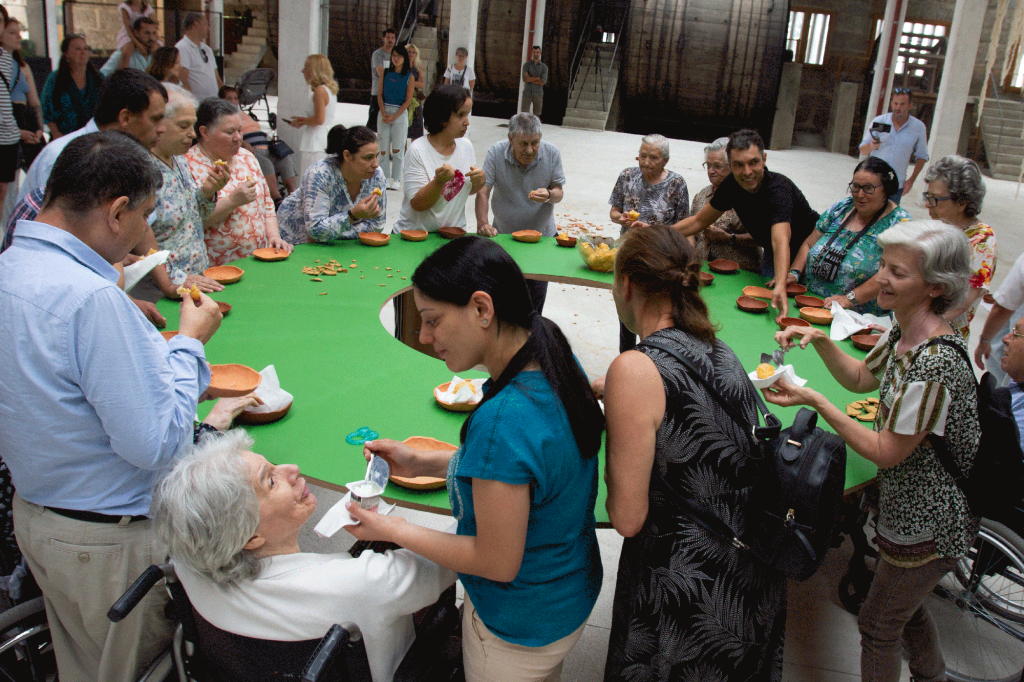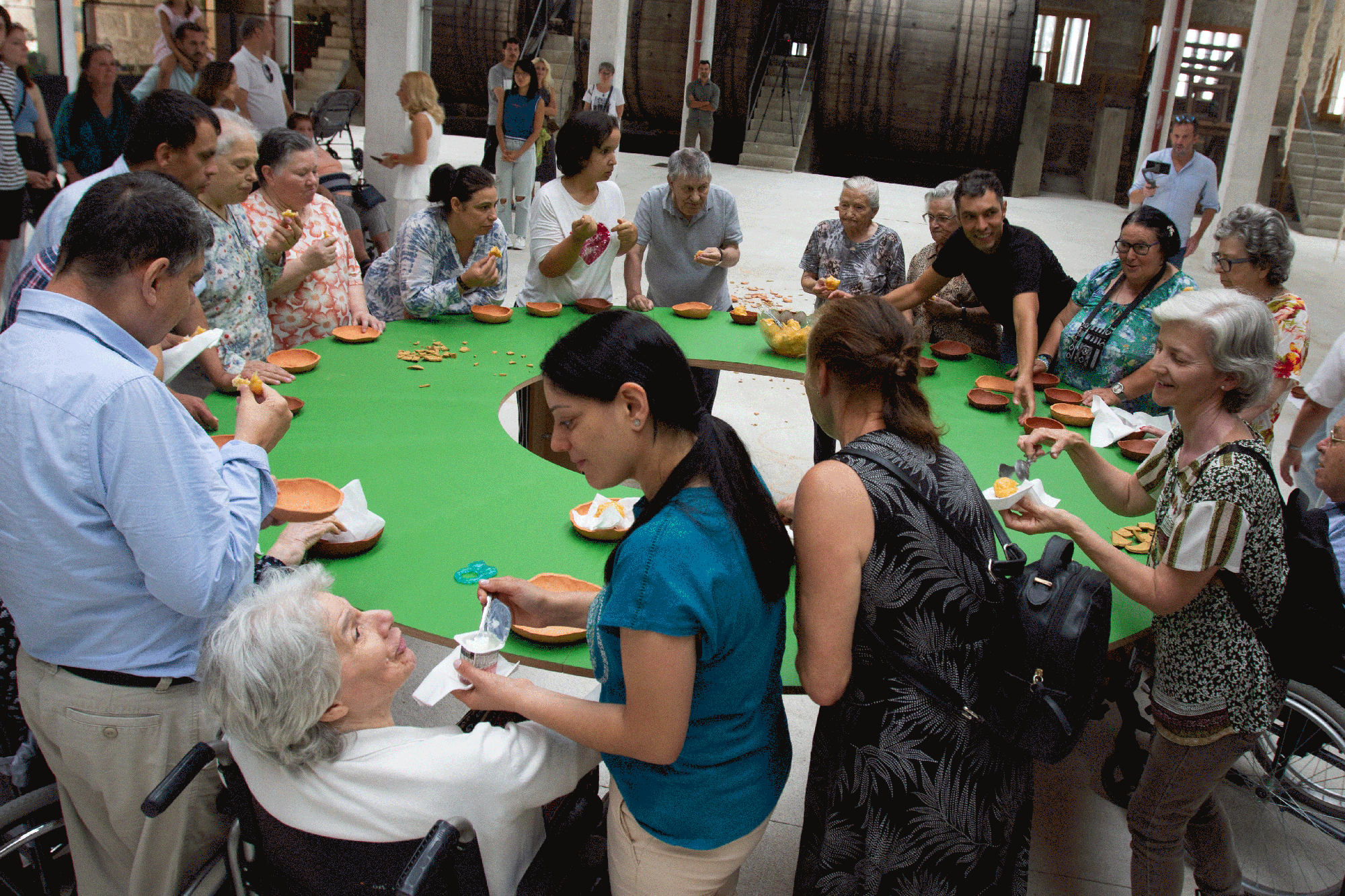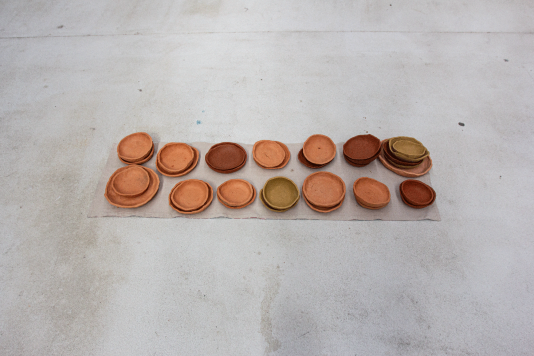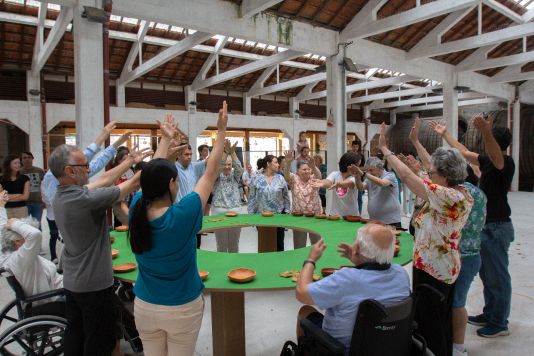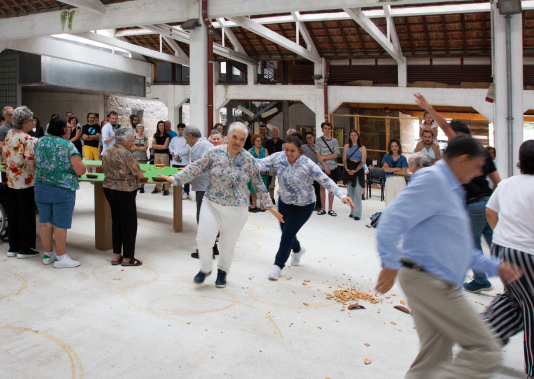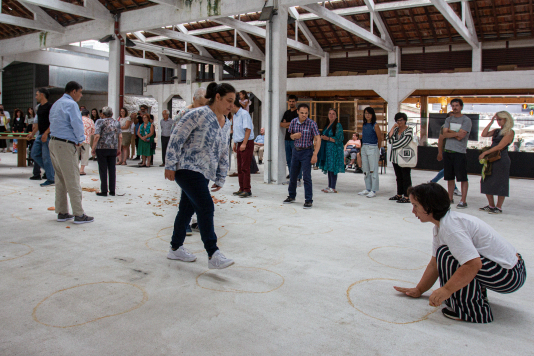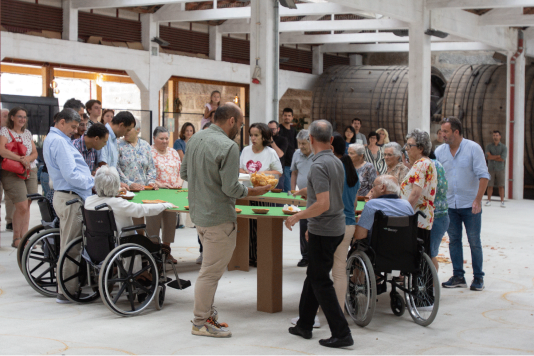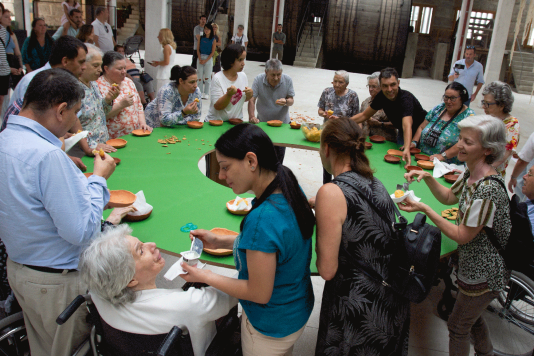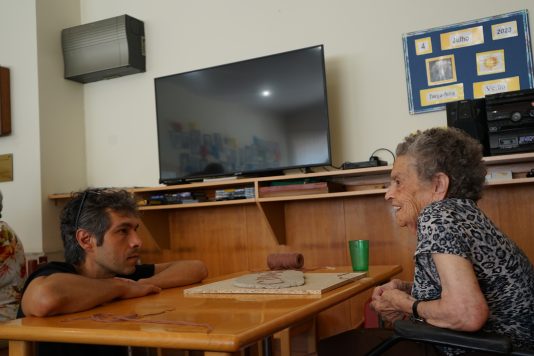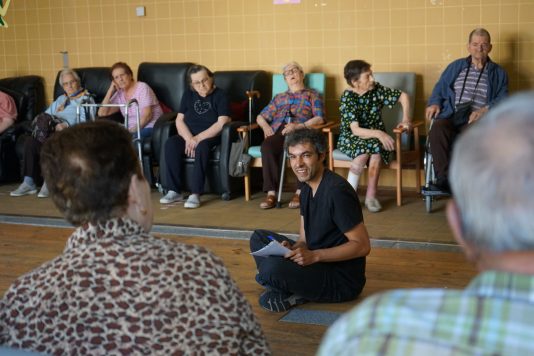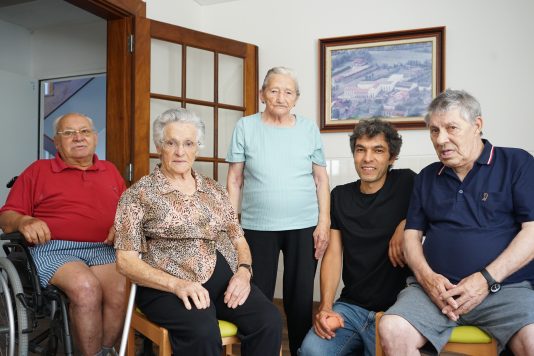Artist: Max Fernandes
Curator: Cláudia Melo
Partner: Ideias Emergentes-Portugal
SONHOS ESQUECIDOS
(Forgoten Dreams)
Max Oliveira Fernandes is a Portuguese visual artist and educator who has dedicated himself to researching and practicing art that explores the intersections of art, society, politics, and ecology. His work encompasses the creation of artistic objects, the exploration of new materials, and engagement with the community through performance art.
During this residency, Max was invited as a local artist, and throughout the month of July, he collaborated with elderly residents of Santa Casa da Misericórdia de Guimarães’ care homes as part of his creative process. To gain a deep understanding of the local culture and the specific context in which he was working, we organized a series of visits to museums, pottery studios, and textile factories in the area, along with a pottery workshop led by a local ceramist.
The curatorial approach, titled “Sewing the Fabric, Burning the Clay – Between Textiles and Ceramics” (Do Coser e do Cozer – Entre o Têxtil e a Cerâmica), was grounded in a comprehensive examination and contemplation of Guimarães’ distinctive elements, specifically textiles and pottery/ceramics. It focused on the artists’ relational dynamics and their collaborative practices with the elderly residents of Santa Casa da Misericórdia de Guimarães’ care homes.
These (dis)similarities between textile and ceramic traditions became apparent in everyday customs, the enduring use of these materials, local legends and traditions, and aspirations for a better future. The goal was to reestablish a tangible and intangible sense of place, not only by recognizing physical locations but primarily by engaging with the narratives and active participation of local communities. Additionally, it involved building connections with individuals who shared their stories, experiences, and personal knowledge.
The relationship with Guimarães, rooted in its textile culture, which historically also embraced pottery craftsmanship for everyday household items, was deeply considered. Commonalities and disparities within these two artisanal traditions were identified and thoroughly explored. What significance do textiles and pottery hold in the homes and lives they were once a part of? These objects carry within them memories and actions—desires, dreams, and aspirations.
It is widely accepted that humanity’s relationship with the surrounding world is mediated through the senses and the brain, resulting in subsequent memories. We comprehend, interpret, and engage with the sites of action, summoning forth a notion of the future from their past and present. This is achieved through games and systems that activate the memories of these places (homes, workplaces, factories, streets) and their connection or reconnection to the individual or collective subject (communities), as well as the inherent practices of these places (textiles and pottery, ceramics, daily life). Perhaps only in this way can a meaningful present and future be established.
In this residency, Max Fernandes conducted several workshops involving 18 individuals from the Santa Casa community. The themes explored included the embodiment of the self, the notion of presence (both individual and collective), and the concept of spatiality. From this process of sharing and collaborative creation emerged an installation composed of a circular table, “sonhos” (traditional Portuguese sweets), and clay plates. Additionally, a collaborative performance titled “Forgotten Dreams” was presented to the public at the end of the residency. This performance involved the participation of Ana Barbosa, José Manuel Ferreira, Maria Freitas, Rosa Oliveira, José Almeida, Olinda Cal, Conceição Fernandes, Carlos Silva, Francisco Antunes, Conceição Silva, Rosa Vaz, Tiago Duarte, Mafalda Pereira, Maria Goretti, Elisa Guise, Laura Pereira, Armanda Gonçalves, and António Matos (residents and technicians of Santa Casa da Misericórdia de Guimarães’ care homes).
Regarding “Sonhos Esquecidos” (“Forgotten Dreams”), the question is posed, “How many dreams can fit within a dream intended for all?” Max Fernandes’ work takes shape through the lens of utopia, lived experiences, and communal sharing. The community serves as both an individual starting point and a collective destination, an attempt to symbolically realize an ideal society – a chimera.
This new narrative/knowledge is constructed through the encounter between the artist’s own body and the community’s body. The process of this residency is structured around various workshop-style gatherings with small groups of Santa Casa da Misericórdia de Guimarães’ residents (S. Paio Rest Home, Alecrim/CACI Residential Home, Donim Rest Home, Prof. Emídio Guerreiro Human Solidarity Center, Queen D. Leonor Rest Home). A central metaphor to understand the process of interpreting and comprehending reality is the concept of a “game,” reminiscent of Hans-Georg Gadamer’s philosophical hermeneutics. Gadamer emphasized that interpretation is an active engagement requiring the participation of the interpreter. The interpreter is not a passive observer but an active participant in the process of understanding. There are structures and guidelines within the players’ experience, such as contextual and cultural norms, yet these actions encompass an expanded and shared horizon of meaning, involving a process of questioning and mutual response. Understanding arises from the fusion of the interpreter’s and the object’s horizons, where dialogue and interaction enable a deeper comprehension. There is no objective truth to be discovered outside the interaction between the interpreter and the interpreted.
Max’s journey with the communities is built upon this foundation. What is presented in this exhibition space is a shared slice of time, where the process is transformed into a tangible form. The physical outcome is the materialization of this intangible mutual achievement and knowledge, which is deeply moving. The first act, Max’s initial encounter with the community, was one of contraction. The artist’s body did not belong to that world. From his personal memories, he brought the mark of a friend’s bodily decline – a friend who, faced with the harshness of industrial labor, became constrained by immobility.
It is always the body in relation to the memories of a territory, a profession, a tradition, a heritage – gradually expanding and intertwining, forming a web and pattern. Within this collective, people are the fabric that weaves itself. From oneself to others, from others to oneself, it’s a rhythmic movement of construction, akin perhaps to the twisting of fibers forming a thread, or the almost magical transformation of clay on the potter’s wheel. Hence, it is within the realm of relational aesthetics that everything unfolds here, reflecting a broader concern with human relationships, public space, territory, and social sphere. It explores questions of identity, politics, interaction, and communication.
The clay takes shape, molded by the artist’s hands as they explore the potential of this material. Objects come into existence in this work. Several red clay plates (perhaps the only means capable of conveying dreams from one hand to another) are placed upon a circular table. The stories of everyday life, habits, daily practices, people’s relationship with the place they inhabit, the group, the community, and social movement – all are of interest.
Everything appears to complete a circle. The table is a metaphor with dual interpretations. On one hand, it invites gathering, sharing food and words; on the other, it can be limiting (a vicious circle) where nothing expands, and everything concentrates. A symbolic sharing of food is proposed on the day of the public presentation, involving a performance in which everyone participates. “Sonhos” (dreams) are served.
Within this shared moment, a privileged space emerges for reflection on questions of identity and existence, dialogue and confrontation, memories, and unfulfilled aspirations. After all, how many dreams fit into a common dream?
Curatorial text by Cláudia Melo
July 2023
